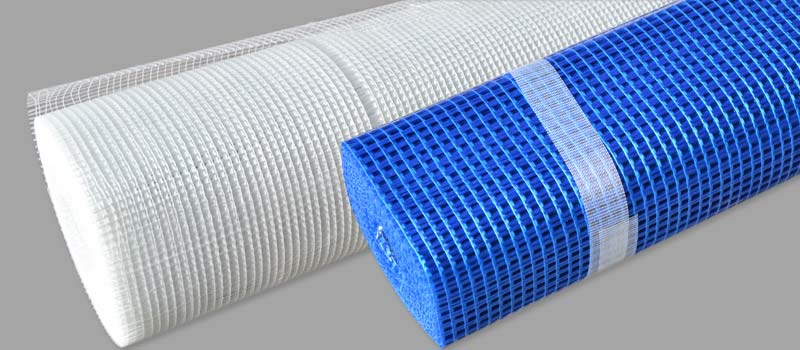GLASS FIBER MESH
Glass fiber is formed when thin strands of silica-based or other formulation glass are extruded into many fibers with small diameters suitable for textile processing.Glass fibre mesh are alkali resistance. The most common types of glass fiber used in fiberglass is E-glass, which is alumino-borosilicate glass with less than 1% w/w alkali oxides, mainly used for glass-reinforced plastics. Other types of glass used are A-glass (Alkali-lime glass with little or no boron oxide), E-CR-glass (Electrical/Chemical Resistance; alumino-lime silicate with less than 1% w/w alkali oxides, with high acid resistance), C-glass (alkali-lime glass with high boron oxide content, used for glass staple fibers and insulation), D-glass (borosilicate glass, named for its low dielectric constant), R-glass (alumino silicate glass without MgO and CaO with high mechanical requirements as reinforcement), and S-glass (alumino silicate glass without CaO but with high MgO content with high tensile strength).
Our range of products include fibre glass mesh ,80 gsm mesh is used for plaster,45 gsm used for waterproofing,145 gsm used for wall enhancement ,thermal insulation and filters because of it high temperature resistance quality .Our mosquito fibre mesh are widely used in UPVC , WINDOWS and doors as they are fire retardant
Glass Reinforced Plastic
Glass-reinforced plastic (GRP) is a composite material or fiber-reinforced plastic made of a plastic reinforced by fine glass fibers. Like graphite-reinforced plastic, the composite material is commonly referred to as fiberglass. The glass can be in the form of a chopped strand mat (CSM) or a woven fabric.[6][26] As with many other composite materials (such as reinforced concrete), the two materials act together, each overcoming the deficits of the other. Whereas the plastic resins are strong in compressive loading and relatively weak in tensile strength, the glass fibers are very strong in tension but tend not to resist compression. By combining the two materials, GRP becomes a material that resists both compressive and tensile forces well. The two materials may be used uniformly or the glass may be specifically placed in those portions of the structure that will experience tensile loads.Uses
Uses for regular glass fiber include mats and fabrics for thermal insulation, electrical insulation, sound insulation, high-strength fabrics or heat- and corrosion-resistant fabrics. It is also used to reinforce various materialsFeatures
- � High crack strength
- � Rust proof
- � Easy to use
- Fabrics of woven glass fibers are useful thermal insulators because of their high ratio of surface area to weight. However, the increased surface area makes them much more susceptible to chemical attack. By trapping air within them, blocks of glass fiber make good thermal insulation




